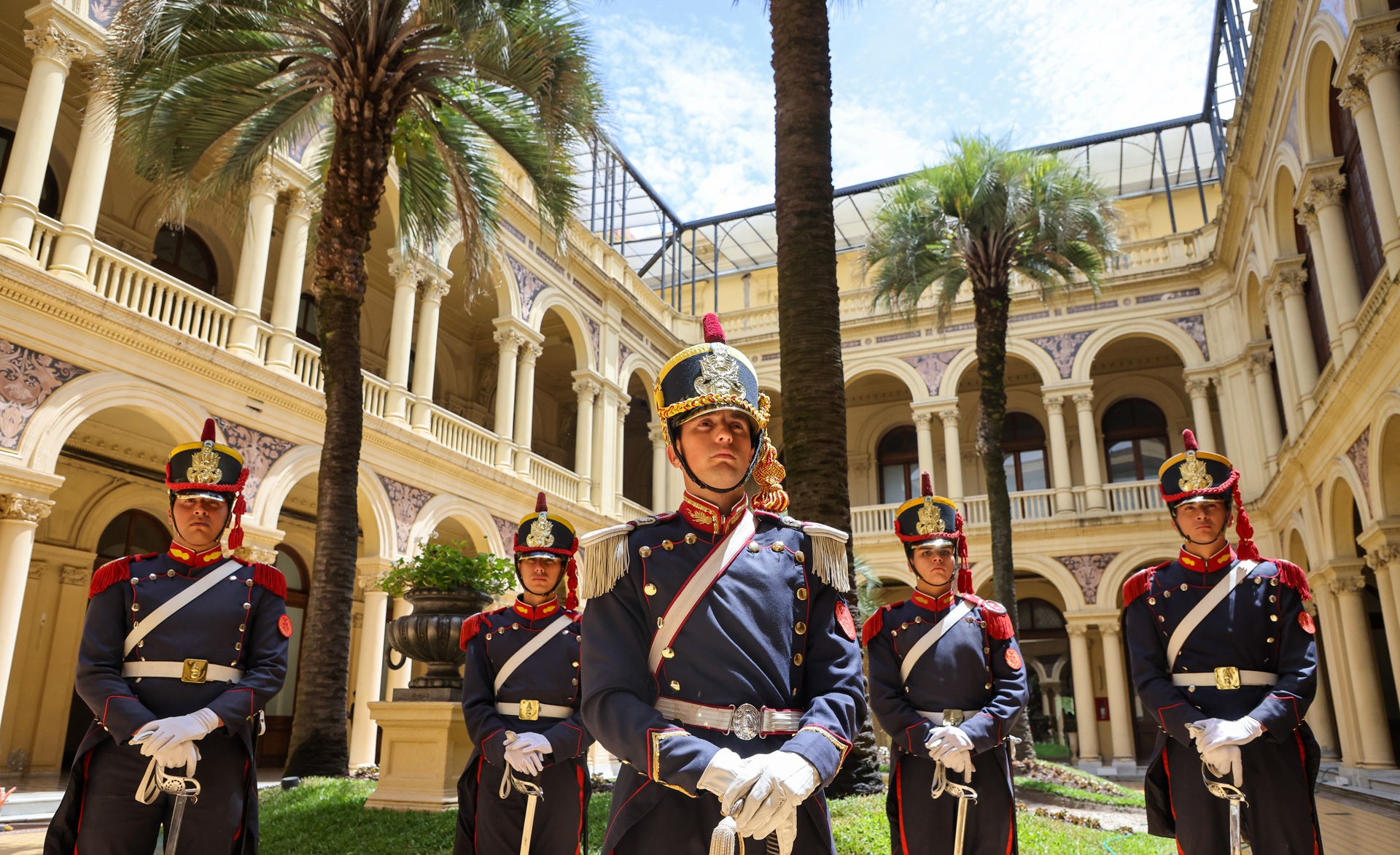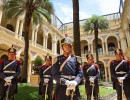Today, March 16th, commemorates the creation of the Regiment of Horse Grenadiers, founded in 1812 by the then Lieutenant Colonel José de San Martín. From its beginnings, this military unit stood out for its discipline, bravery and deep sense of duty, becoming a symbol of honour and patriotism in Argentine history.
Convinced that independence required not only military prowess, but also a strong commitment to the homeland, San Martin forged in his men a spirit of unwavering sacrifice and loyalty. He not only trained them for battle, but instilled in them values that defined the essence of the regiment.
From their baptism of fire at the Battle of San Lorenzo in 1813, through the heroic Crossing of the Andes in 1817, to the decisive Battle of Ayacucho in 1824, the Granaderos were on the front line of the struggle for freedom. In barely a decade, they accumulated 22 decorations, leaving an indelible legacy of heroism.
In 1903, under the presidency of Julio Argentino Roca, they were assigned the mission of being the Presidential Escort, a role they still play today. The regiment has four mounted squadrons: Riobamba, Junín, San Lorenzo and Maipú, in charge of parades and ceremonies. To these are added the foot squadrons, Chacabuco and Ayacucho, responsible for presidential security at the Casa Rosada and the Olivos Residence, as well as the custody of San Martín's remains in the Metropolitan Cathedral and the Liberator's sabre in the National Historical Museum.
With its unmistakable music of tordillo horses and timbales, the Alto Perú Military Fanfare adds a distinctive touch to every official act in which it participates. The regiment also has detachments in Yapeyú, San Martín's hometown, and in San Lorenzo, the scene of his first battle.
The uniform of the Grenadiers: an emblem of identity and tradition
Designed by San Martín himself, the historical uniform of the Grenadiers combined functionality and elegance.
Today, it retains its original essence with the morrion, jacket, white gloves, trousers and boots.
The morrion, with its burgundy plume, national cockade and bronze shield, not only distinguishes the Grenadiers, but in its original design it fulfilled a defensive role. Its metal galapagos protected the left side of the head, while the gold chinstrap prevented wounds from bladed weapons. The visor, besides providing protection from the sun, forced the wearer to keep his eyes up, reflecting the firm and disciplined attitude of the corps.
The blue jacket with crimson piping incorporated gold buttons and embroidered grenades, while the hard leather collar and epaulettes protected against sabre attacks. Over the jacket, the white bandolier held the ammunition pouch, and the belt held the cutlass for the sabre. Today, the sabre is a ceremonial model with a chrome-plated blade and protective cup. The high black leather boots include spurs designed by Saint Martin himself to optimise the handling of the horses.
Inspired by French military tradition, the uniform of the Grenadiers has evolved over time, but remains a symbol of the regiment's history and honour. With every formation, parade and escort, the Horse Grenadiers continue to reaffirm the San Martinian legacy and their fundamental role in the national identity.

